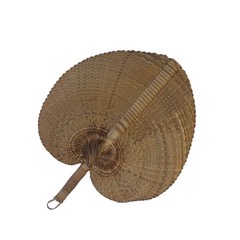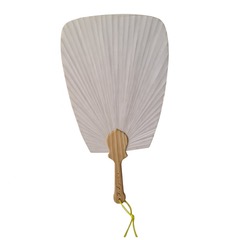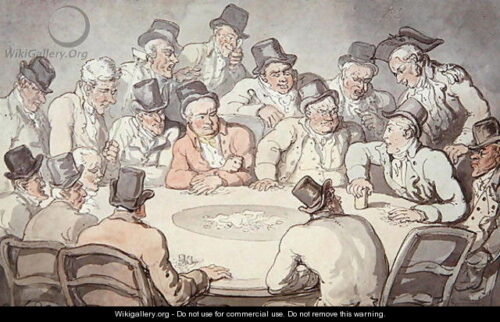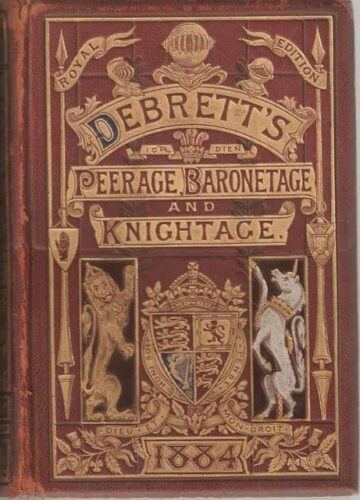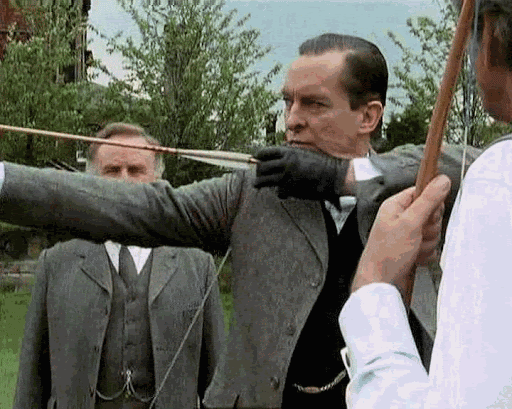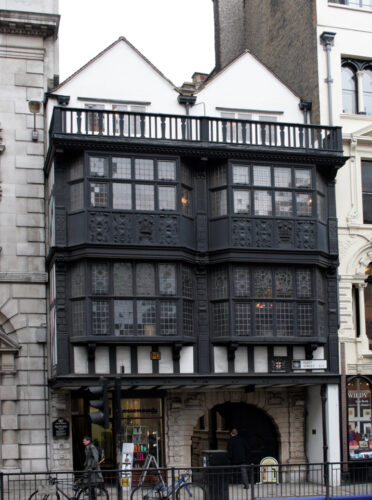 The Three Locks
The Three Locks
For more information on the book, please see here.
(It is recommended that you read along with or after the book but don’t read ahead, as there are SPOILERS if you do)
Chapters
Annotations for the remaining chapters are coming soon.
CHAPTER ONE - “The Box”
MITIGATING THE HEAT, VICTORIAN STYLE — Part One
 Long before the advent of air conditioning or electric fans, the men and women of Holmes’s time suffered mightily during a heat wave. Denizens of the tropics employed elaborate fanning systems, such as these large hanging contraptions called punkahs. This picture shows a British couple at dinner in India in 1880. Punkahs were operated by servants, but not at 221B Baker Street, of course.
Long before the advent of air conditioning or electric fans, the men and women of Holmes’s time suffered mightily during a heat wave. Denizens of the tropics employed elaborate fanning systems, such as these large hanging contraptions called punkahs. This picture shows a British couple at dinner in India in 1880. Punkahs were operated by servants, but not at 221B Baker Street, of course.
https://en.wikipedia.org/wiki/Punkah#/media/File:Dining_Room_Punkah_1880.jpg
FANS
Hand fans were in common use. Ladies’ versions were highly decorative; here you can see a lovely Pinterest collection of Victorian ladies’ fans compiled by Amy Jones: https://www.pinterest.com/amy_lynn47/victorian-hand-fans/
Watson, however, would have made do with something a bit more plain, like one of these, still available today.
LILY OF THE VALLEY SOAP
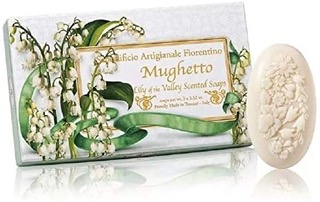
It is well known that scents trigger powerful emotional memories; Watson mentions his mother preferred a distinctive soap scented with Lily of the Valley. This photo is of a current Italian brand, but harks back to Victorian times. Scents popular during most of the nineteenth century were typically single-note florals—violet, rose, etc. Lily of the Valley is a light, fresh scent, much beloved in England and elsewhere. Watson’s mother’s favourite soap might very well have looked and smelled like this one.
THE LOCKED SILVER BOX
There is no extant photo of the box Watson received in this tale, but it might have looked a little like this...with the addition of braided bands of silver and an extremely complex lock.
CHAPTER TWO - “Thwarted”
MEN’S HOT WEATHER CLOTHING

Victorian men’s summer suits were made of linen, and straw hats were the order of the day. Above is a photo of actor Jeremy Brett as Holmes, conferring on the Granada set while in full Victorian summer wear; the details are even more clearly visible in the close-up. One might well imagine such a suit on Holmes in this tale.. Oh, the ironing that someone—likely Mrs. Hudson—had to do!
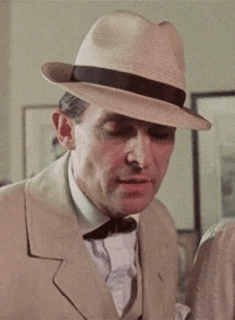
BIRDING GLASSES

One can suppose that if the neighbours opposite Mrs. Hudson's house were really interested in observing the rather bohemian occupants of 221B, they might have employed binoculars such as this replica set, somewhat larger and more powerful than opera glasses. Birdwatching was, of course, a popular hobby, then as now. Neighbour watching? Well...
DANGEROUS LOCKS
In "The Adventure of the Dying Detective", a trick lock brings danger into Baker Street. Called to Baker street by a worried Mrs. Hudson, Watson is shocked both his friend's appearance and disturbed by Holmes's vehement reaction when he starts to pick up an ornate box on the mantel. This "gift," it turns out, has been sent by the villain, and opening it triggers a spring-loaded dart, tipped with a rare infections disease. Spring loaded poisonous locks are now a trope in many role-playing games such as Pathfinder or Dungeons and Dragons, and they have been featured in many stories over the years. In literature, as well as real life, the poisons used on such a dart, needle, or blade (Shakespeare uses a poisoned foil in Hamlet) could be drawn from a large arsenal of sources. Most arrow or dart poisons are plant based, with curare being the most well known, but there’s at least one derived from beetle larvae of the genus Diamphidia, and others from various species of venonmous frogs.
And yes, poisoned locks really did exist. One, shown to me by a lock expert at the National Museum of Locks in Rugby, was designed to get you to peer into a little hole, so that a small blade could flick out and pierce your eye. Yipes!
Holmes was very right to warn Watson off fiddling with the mysterious box.
BATH
One might expect that the still youthful (35) Watson and his card-playing cronies would to prefer holiday at the more fashionable and cooler seaside resorts such as Brighton or Bristol rather than Bath, a more staid and traditional spa getaway. He must have gone for the games.
This 18th century illustration of “gamesters” around a table in Bath hints at the activities that went on behind closed doors. Bath was, until Victoria’s reign, a popular gambling centre. However Victorian regulations stifled public gaming, and by the time of this story, in 1887, the only legal gambling was done in private gentlemen’s clubs, such as The Bath and County Club in Queen Square, which is where Watson most likely stayed during the visit described in this story.
Further reading about these clubs can be found in The Bath Magazine, here: https://thebathmagazine.co.uk/time-gentlemen-please/
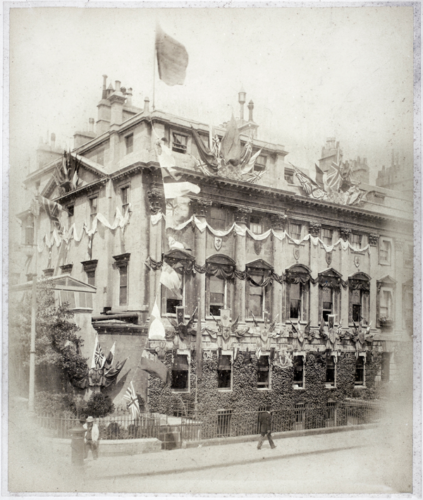
CHAPTER THREE - “You Left Me Hanging”
UNPICKABLE LOCKS
Are there any locks that are truly “unpickable”? Many have claimed to be the inventors of such a thing, but were since proven wrong.
Chubb was considered the unassailable lock, until it wasn’t. In the diagram below, "K" and "F" comprise the detector mechanism. "K" is the catch on the back lever, while "F" is the end of the horizontal detector spring. https://www.mentalfloss.com/article/501820/man-who-picked-victorian-londons-unpickable-lock

Despite this article, however, lock experts tell me there are indeed unpickable locks, such as those which would break before opening, or which are simply not guessable by any means because they require too many random movements in a certain sequence and with the exact right amount of pressure, torque, or delicacy… well, you get the picture.
CHAPTER FOUR - “New Skills”
RUHMKORFF COIL
 This is what was sitting on Holmes’s chemistry table. The Ruhmkorff coil is an early transformer which uses a low voltage direct current to produce high voltage pulses. This technology, in development at the time of this adventure, eventually led to neon lights and x-rays. The glass tubing is a Geissler tube, the precursor to the neon bulb. Different gases would produce different-coloured glowing lights.
This is what was sitting on Holmes’s chemistry table. The Ruhmkorff coil is an early transformer which uses a low voltage direct current to produce high voltage pulses. This technology, in development at the time of this adventure, eventually led to neon lights and x-rays. The glass tubing is a Geissler tube, the precursor to the neon bulb. Different gases would produce different-coloured glowing lights.
If it looks familiar, it is: a giant-sized version is a trope in every Frankenstein re-animation moment—the steampunkish versions of this device providing the “spark of life”. You can learn more about them here: https://www.crtsite.com/page8.html and in this cool video: https://www.youtube.com/watch?v=tvuT-2uCHxU.
VICTORIANS AND ILLUSIONISTS
The late Victorian era is sometimes called the "Golden Era of Magic". You can find a fabulous collection of posters of the era here: https://guides.slv.vic.gov.au/magic
Below is an illusionist's broadside, circa 1877, a bit before this tale. The famous “De La Mano” (Of the Hand) was actually Zell Dreizehn, scion of an Austrian circus family. He toured throughout Europe for decades before coming to perform in the states during the 1880's. In the fall of 1882, he vanished, leaving behind a trunk of advertising posters. The story goes that he was investigating a haunted house and disappeared while locked in his room during a thunderstorm. The accompanying photo is of a famous “Ghost Show” c.1908. Unlike De La Mano's dramatic tale, this show may have been a version of "Pepper's Ghost"—undoubtedly familiar to readers of Unquiet Spirits.
DISLOCATED SHOULDER
Depending on how extreme the dislocation, permanent damage could indeed ensue. Watson is very right to caution Holmes, who often displays a lack of concern for his own physical well-being. This attitude is highly characteristic of a man driven by work and who naturally enjoys a robust constitution. Of course, X-rays did not yet exist and doctors relied on external palpation to diagnose skeletal issues.

THE VICTORIAN ICE BOX
This is a typical middle class ice box at the time of this story. My own grandmother had a vestigial one exactly like this one in her Victorian-era flat in San Francisco in the 1950’s! A block of ice was placed in the upper, zinc-lined compartment. In London, ice was brought by icemen, who came around in carts and carved off a piece for you. The ice originally came from as far away as the Great Lakes, which was the source of Queen Victoria’s ice. Holmes's buying an ice box for Mrs. Hudson was generous, especially if he paid for the ice as well. Not everyone on Baker Street would have had such a new-fangled luxury.
Ice was a very big deal (even more so in hot countries), and a relatively rare commodity all around.

CHAPTER FIVE - “Madame Borelli”
RETICULE
 Many Victorian ladies carried a “reticule”, an often beaded, sometimes fringed purse with a drawstring opening or sometimes a metal clasp. Although they were typically smallish, they ranged in size from very tiny, perhaps for a handkerchief, to quite large. Madame Borelli’s had to be large enough to carry her gruesome evidence for Holmes’s inspection. Perhaps it matches one of those in this illustration:
Many Victorian ladies carried a “reticule”, an often beaded, sometimes fringed purse with a drawstring opening or sometimes a metal clasp. Although they were typically smallish, they ranged in size from very tiny, perhaps for a handkerchief, to quite large. Madame Borelli’s had to be large enough to carry her gruesome evidence for Holmes’s inspection. Perhaps it matches one of those in this illustration:
Image source: https://retrorack.blogspot.com/2012/01/time-traveler-reticules-victorian.html
GOETHE —“ALWAYS PITHY”
Goethe is a favourite of Sherlock Holmes; he quotes him on more than one occasion in the canon. As Sherlockian Ted Friedman writes in his article, “Literary Skills of Sherlock Holmes”: "Sherlock Holmes ... twice quotes Johann Wolfgang von Goethe in The Sign of Four. Referring to Goethe's first part of Faust ('We are accustomed to seeing man despise what he does not understand'), Holmes says, 'Goethe is always pithy.' Later in the same story, Holmes quotes Goethe, 'Nature alas, made only one being of you although there was material for a good man and a rogue.'" (https://www.trussel.com/detfic/friedlit.htm) Observant viewers of the BBC show Sherlock have doubtless noticed a bust of Goethe on the 221B set. The bust mentioned in this case might have looked very much like the antique below, showing the philosopher/playwright as a young man.

Here are some of the author, Bonnie MacBird’s, favourite Goethe quotes:
"A person hears only what they understand.”
"Behaviour is the mirror in which everyone shows their image.”
"One ought, every day at least, to hear a little song, read a good poem, see a fine picture, and, if it were possible, to speak a few reasonable words.”
MOROCCAN TABLE
Thanks to the passion for “Orientalism”, these tables were all the rage in Victorian sitting rooms during the last two decades of the 19th century. You’ll see them in nearly every Holmes representation on film. There would very naturally have been one at 221B. Here’s a very fine example, offered by FirstDibs at an exorbitant price.
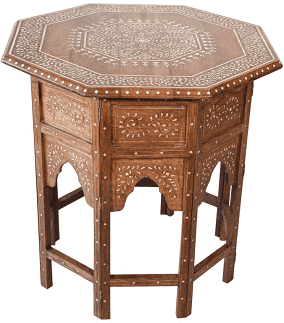
THE “MISTAKEN” BERETTA
While Beretta is one of the oldest gun-making firms in the world, Madame Borelli’s pistol in this scene could not have been one. The company began manufacturing its first semi-automatic pistol thirty years later, in 1915, similar to the one pictured below:

It is remarkable that Watson, a cool-headed former soldier and crack shot himself, would make this mistake. Either he penned this much later and it was failure of memory, or perhaps he left out the name, and some overzealous editor or later chronicler filled it in incorrectly.
Madame Borelli would have been much more likely to have taken aim with a Derringer, of convenient size and perhaps an elegant design, such as the one below from 1866, some years before our story.

TENNIS RACQUET…
 When Mrs. Hudson enters the sitting room with Watson’s racket, one has to wonder why she had it. Perhaps she had it restrung for him. Or maybe she borrowed it for a game herself; women did indeed play tennis at the time, although not dressed as we might be today. In fact, as you can see from the photo of this young woman, people wore a variation on street clothes to play tennis.
When Mrs. Hudson enters the sitting room with Watson’s racket, one has to wonder why she had it. Perhaps she had it restrung for him. Or maybe she borrowed it for a game herself; women did indeed play tennis at the time, although not dressed as we might be today. In fact, as you can see from the photo of this young woman, people wore a variation on street clothes to play tennis.
Here’s a picture of the wining match at Wimbledon four years before our tale...
And here is the negative of what is clearly a model, apparently taken in 1886 as well:
CHAPTER SEVEN - “The Deacon”
A SATURNO HAT
 It was perhaps an odd choice for the young deacon from Cambridge, but this hat, so nicknamed for its resemblance to the planet Saturn, is also known as Capella Romani or “Roman Hat". It’s essentially unofficial, with no specific meaning and was falling out of favour even in Holmes's time. Our deacon, who would only be allowed a plain black one, was simply making a practical choice to keep the sun off.
It was perhaps an odd choice for the young deacon from Cambridge, but this hat, so nicknamed for its resemblance to the planet Saturn, is also known as Capella Romani or “Roman Hat". It’s essentially unofficial, with no specific meaning and was falling out of favour even in Holmes's time. Our deacon, who would only be allowed a plain black one, was simply making a practical choice to keep the sun off.
OUR LADY OF THE ROSES CATHOLIC CHURCH
There is no such scandalous Catholic church in Cambridge, and whatever place Watson refers to in this story is either fictionalised completely, (as one might hope), or drawn from another place entirely. As we well know, Watson frequently employs such subterfuge in order to protect the innocent. At the time of this story, there was one Catholic church in Cambridge, St. Andrews, which was later dismantled and moved elsewhere. The preeminent Catholic church in the area (and clearly NOT the one in the story) is OLEM, Our Lady of the English Martyrs, which was begun in 1885 and not consecrated until 1890.
Cambridge had opened its doors to Catholics in 1871 but the “Congregation for the Propagation of the Faith” felt it would be a “mortal sin” for Catholics to attend, because of the influences of liberalism and scepticism prevalent in the teaching at both Oxford and Cambridge. Wealthier Catholics, wishing their sons (sadly, both universities only admitted males) to obtain the intellectual and social benefits of an Oxbridge education, objected loudly. The ban was lifted in 1895, but only provided a Catholic chaplaincy was established. The one in Cambridge was founded in 1896, well after the time of this story, and is called Fisher House.
There are now a number of Catholic churches in the Cambridge area, and Google Maps reveals the following in the present day:
DEBRETT’S
This invaluable volume, still published today, lists everyone in the Peerage; a new edition appears annually. Holmes was familiar with many members of the nobility, and recognised the name of Dillie’s suitor, Eden-Summers. In addition to listing the peerage, DeBrett's also publishes guides to modern etiquette. Suppose, for example, you were invited to dine with royalty, and apples were served. If you had consulted DeBrett's online guide to “challenging foods”, you would be undaunted, as you would remember: “Apples ----At the dinner table, apples should be cut into quarters and the core removed from each piece. Then use fingers to eat the quarters. Elsewhere, just hold and crunch."
Below are two examples of DeBrett's: one which would have been on Holmes's shelf in 1884, and the other in 2019.
CHAPTER EIGHT - “A Close Escape”
WILTON’S MUSIC HALL
The oldest surviving music hall in London, Wilton's was used as a location for Watson’s bachelor party in the 2011 Sherlock Holmes film starring Robert Downey Jr and Jude Law.
The Hall went through many incarnations, but in 1886 at the time of this story, it was used for variety acts, although not necessarily those of the first class. Borelli’s ego may not have accurately reflected his station, although he claims he’ll soon be playing better places. Shortly after this time, Wilton's shut down. It was bought by the East End London Methodist Mission, which used it in its ministry for destitute dockworkers, providing meals in exchange for a few prayers for seventy years. It then closed again, and fell into disrepair. Now it has been restored to its original state and rents out both as a music hall for wonderful vintage-style entertainment and also as a wedding and party venue.
Find more pictures of the hall here: https://www.instagram.com/wiltonsmusichall/
THE WATER TORTURE TRICK
 The Great Borelli's immersion in a water tank, if it happened as Watson describes, would have predated the famous Houdini’s similar WATER TORTURE trick, shown here circa 1914. Borelli wanted his audiences to think there was a magical or supernatural element to his illusions. This is something that Houdini, a skeptic who devoted his life to debunking the mystical, would never have done.
The Great Borelli's immersion in a water tank, if it happened as Watson describes, would have predated the famous Houdini’s similar WATER TORTURE trick, shown here circa 1914. Borelli wanted his audiences to think there was a magical or supernatural element to his illusions. This is something that Houdini, a skeptic who devoted his life to debunking the mystical, would never have done.
You can hear Houdini here, in this rare recording, practicing his introduction to this trick. “There is nothing supernatural…”
https://publicdomainreview.org/collection/houdini-on-his-water-torture-cell-1914
CHAPTER NINE - “Misdirection”
 "Double jointed" really refers to hypermobility. The man in this picture is performing the “reverse prayer pose”, a yoga staple, and not quite as exotic as Watson assumed when he saw Borelli casually assuming the same. However it’s not possible for everyone. Watson's shoulder (leg?) would have certainly made it impossible for him.
"Double jointed" really refers to hypermobility. The man in this picture is performing the “reverse prayer pose”, a yoga staple, and not quite as exotic as Watson assumed when he saw Borelli casually assuming the same. However it’s not possible for everyone. Watson's shoulder (leg?) would have certainly made it impossible for him.
CHAPTER ELEVEN - “The Floating Doll”
A VICTORIAN DOLL
 The doll in question most likely had a bisque head and arms, real hair, and a soft cloth body. The photo at right shows a doll manufactured by Simon & Halbig, a pre-eminient German doll company, in 1899. She has a distinctive face, and one can well imagine such a doll could be commissioned to look like a specific little girl.
The doll in question most likely had a bisque head and arms, real hair, and a soft cloth body. The photo at right shows a doll manufactured by Simon & Halbig, a pre-eminient German doll company, in 1899. She has a distinctive face, and one can well imagine such a doll could be commissioned to look like a specific little girl.
THE JESUS LOCK
This is a lock on the River Cam which winds around Cambridge. A lock is a device for allowing boats to navigate waterways of varying levels.
The Jesus Lock is located in the north end of Cambridge, in the dead centre of this map from 1888, and was built in 1836. The footbridge which is integral to the story existed in 1887.
And at that time, looked like this:
The river is prone to flooding; here is a picture of from a flood in February 2001 showing the water is flowing over the floodgates.

The author standing at the Jesus Lock in Cambridge in 2019 while researching this book:
More on the lock in a later chapter….
BRADSHAW
 Bradshaw's was the definitive guide to railway schedules, and also included maps and useful travel information. Most middle class people who traveled by train would have had one. Oddly, in 1968, a facsimile of the 1887 Bradshaw’s, which Watson uses in this story, was reproduced and is available on various auction sites. Here’s what Dr. Watson's might have looked like:
Bradshaw's was the definitive guide to railway schedules, and also included maps and useful travel information. Most middle class people who traveled by train would have had one. Oddly, in 1968, a facsimile of the 1887 Bradshaw’s, which Watson uses in this story, was reproduced and is available on various auction sites. Here’s what Dr. Watson's might have looked like:
CHAPTER TWELVE - “The Wyndhams”
AN EXPENSIVE BROUGHAM
 The brougham, (rhymes with “room” or “roam”) was a horse-drawn carriage with four wheels, invented by Lord Brougham circa 1838-9. It had an enclosed carriage and a window in the front, giving the passengers more light and a partial view. It usually seated only two, although larger ones, as pictured, may have had two fold-away seats in the front corners. It would be an expensive item for any family. Presumably the Wyndhams had this type for themselves and their two daughters.
The brougham, (rhymes with “room” or “roam”) was a horse-drawn carriage with four wheels, invented by Lord Brougham circa 1838-9. It had an enclosed carriage and a window in the front, giving the passengers more light and a partial view. It usually seated only two, although larger ones, as pictured, may have had two fold-away seats in the front corners. It would be an expensive item for any family. Presumably the Wyndhams had this type for themselves and their two daughters.
VACANT EYES…OLD STATUES
 We think of Greek and Roman statues as being made of pristine, white marble. In actuality, they were painted—including the eyeballs. Over time, weather wore the paint away, and if the statue was buried, the paint deteriorated and was brushed off during excavation and cleaning. Still, enough bits have been left on for archeologists to realise that they were very definitely painted—and to attempt restore their appearance with modern science. Perhaps the statue below once looked like this, which is pretty...tacky...to our modern eyes.
We think of Greek and Roman statues as being made of pristine, white marble. In actuality, they were painted—including the eyeballs. Over time, weather wore the paint away, and if the statue was buried, the paint deteriorated and was brushed off during excavation and cleaning. Still, enough bits have been left on for archeologists to realise that they were very definitely painted—and to attempt restore their appearance with modern science. Perhaps the statue below once looked like this, which is pretty...tacky...to our modern eyes.
 Theories that Greek and Roman statues were “classically all white” and that Egyptian statues (like that of Queen Nefertiti, to the right) were painted—supposedly an indicator of cultural differences—are simply wrong. It’s just that the paint survived more easily in the dry climates of desert countries.
Theories that Greek and Roman statues were “classically all white” and that Egyptian statues (like that of Queen Nefertiti, to the right) were painted—supposedly an indicator of cultural differences—are simply wrong. It’s just that the paint survived more easily in the dry climates of desert countries.
An utterly fascinating article on the history of painted statue theories and research, including an animated reconstruction of the layers of paint on the "Treu Head” in the British Museum, can be found here. It is likely that, just as varying degrees of talent went into the carving, so it did with the painting as well. Some modern recreations of painted statues are so garish and simplistic that they give the impression of vulgarity to our modern eyes. But the Treu electronic recreation from careful scientific studies reveals layers and layers of paint, with many subtle variations.
Later, during the Italian Renaissance, sculptor Michelangelo was apparently so disturbed by the blank eyes of Greek and Roman statues, that he began carving irises and pupils into the eyes of his own creations, as you can see in his head of David:

During the Enlightenment, the French genius Jean-Antoine Houdon carried this idea farther, indicating even the colour of the eyes by the depth of the carving of the iris (shallower for light eyes). A detailed description of Houdon’s technique can be found in this terrific article in the Washington Post.
These are not Houdon’s, but you can see his ideas displayed clearly in this picture:

CHAPTER THIRTEEN - “Polly”
POMADE
When Holmes examines Dillie’s dressing table, he notes that personal grooming items are missing. Both men and women regularly used pomade to keep stray hairs neatly in place. Victorian ladies used it to tame and shape small curls around the face. Many people made their own (or presumably had servants to do so.) Some pomades were lard-based, others vaseline-based, but some used beeswax. Most were scented delicately with rosewater, citrus, or lavender.
Here is a recipe for “Pomade Victoria” from The New Cyclopaedia of Domestic Economy, and Practical Housekeeper:
http://www.sewhistorically.com/pomade-and-hairspray-victorian-and-edwardian-hair-care/
- 1/4 pound honey
- 1/2 oz beeswax
- 1/4 drachm almond oil
- 1/4 drachm lavender oil
- 1/4 drachm thyme oil
Simmer honey and beeswax together for some minutes, then strain, add the oils, and stir the mixture till cold.
Or you could just buy something like this, today. Pomade fell out of favour in Edwardian times, and has gone in and out of fashion over the decades.
THE SPINNING HOUSE
This was a place of terror for young women of Cambridge. It was a kind of holding place—a jail, really—manned by proctors and run by the University outside the purview of the Cambridge police force. Its stated purpose was to remove ladies of the night from the streets, because of the dangers they presented to innocent young college men: disease, debauchery, and, well, sex! Young women who were rounded up were sometimes beaten, examined for venereal disease and incarcerated without recourse to legal representation. They simply disappeared off the streets and hoped to be released unharmed, assuming their families or employers found them! Upper class women had nothing to fear, generally, but maids, shopkeepers assistants, seamstresses — young honest working girls—were swept into this horror on a regular basis. The Spinning House was eventually outlawed, but operated in full swing at the time of this tale.
CHAPTER FOURTEEN - “Atalanta”
ATALANTA’S SHORT HAIR
 In Victorian times, it was thought that hair sapped the strength, and many people who were ill had their hair shorn as it was supposed to aid in recovery. That is why Watson says that Atalanta’s pallor “and her short hair suggested she might be suffering or recovering from some illness.” This “cure” is also featured in "The Adventure of the Copper Beeches" ; young Miss Violet Hunter was asked to cut her hair quite short as she was unknowingly being hired to impersonate a daughter who had been kept prisoner after an illness. But it is also thought that some girls just rocked the look for its freedom and charm, perhaps like the attractive girl in this photo, and perhaps like Miss Atalanta Wyndham, although we do not discover this for sure.
In Victorian times, it was thought that hair sapped the strength, and many people who were ill had their hair shorn as it was supposed to aid in recovery. That is why Watson says that Atalanta’s pallor “and her short hair suggested she might be suffering or recovering from some illness.” This “cure” is also featured in "The Adventure of the Copper Beeches" ; young Miss Violet Hunter was asked to cut her hair quite short as she was unknowingly being hired to impersonate a daughter who had been kept prisoner after an illness. But it is also thought that some girls just rocked the look for its freedom and charm, perhaps like the attractive girl in this photo, and perhaps like Miss Atalanta Wyndham, although we do not discover this for sure.
A SONNET OF THE SHAKESPEAREAN TYPE
When we think of sonnets (if we do!), it is typically the Shakespearean form which comes to mind. This type is formally defined as fourteen lines of Iambic pentameter: three quatrains (four line stanzas), and one couplet (two line stanza), with the rhyme scheme:
ABAB
CDCD
EFEF
GG
with the final couplet summarising or adding new information to what has gone before.
In those more literate times, students learned different forms of poetry and were often required to write examples; it would not be unusual for Holmes and Watson not only to be completely familiar with the form, but to have had to cough up a few themselves in their student days. Arthur Conan Doyle himself dabbled in sonnets.
 Writing to form is a remarkably freeing, rather than constraining, task for the creative writer, and the book The Ode Less Travelled by polymath (and great Sherlockian) Stephen Fry—a hilarious course in writing poetry—is highly recommended as a literary playtime for aspiring writers.
Writing to form is a remarkably freeing, rather than constraining, task for the creative writer, and the book The Ode Less Travelled by polymath (and great Sherlockian) Stephen Fry—a hilarious course in writing poetry—is highly recommended as a literary playtime for aspiring writers.
ARCHERY FOR WOMEN
The same passion for the Middle Ages that fuelled Arthur Conan Doyle’s literary efforts, and indeed the whole Gothic Revival in art, architecture and decor, ignited a passion for archery, one of the few sports in which women were welcomed quite early. Royalty’s passion for archery since the late Medieval era gave the sport even more cachet. Some think Anne Boleyn’s archery skills helped her gain the unfortunate attention of Henry VIII, and Queen Elizabeth I herself was an archer.
At the time of this tale, women were members of archery clubs; the pictures below illustrate two archery contests of the time. The colour engraving on the right shows a women’s archery event held in Regent’s Park, very near Baker Street. You can see that, as with the tennis outfits of the times, people wore a variation of their regular street clothes to participate in this sport. The black and white illustration is of the Toxophilite Society, also held at Regent’s Park. The area has since been converted into tennis courts.
A fascinating article on the subject of women and archery is here:
https://worldarchery.sport/news/178437/archery-history-sport-pioneered-equality-womens-participation
...from which comes the following quote: “Crucially, it was also a sport where women could wear the extensive fashions of the day. Archery for women rapidly became an acceptable area to display marriageability.” A later guide to country pursuits coyly remarked that “few exercises display an elegant form to more advantage”.
As advanced as we are now on the subject of women’s agency and suitability for almost all sports, the quote above still pertains to the portrayal of the bombshell “lady archer” in today’s modern cinema, exemplified below in Wonder Woman.
ARCHERY ARM GUARD
Holmes realised that the scars on Atalanta’s forearm indicated that she did not wear an arm guard for archery, as seen in this illustration:
 Arm guards are generally recommended, so that upon release, the bow string does not snap back and cause injury, as you can see in this rather extreme example:
Arm guards are generally recommended, so that upon release, the bow string does not snap back and cause injury, as you can see in this rather extreme example:
One can avoid such scarring, with care. A ridiculously detailed video on arm guards can be found at this link: https://www.youtube.com/watch?app=desktop&v=SwYM0A14C_k
Atalanta’s marks were presumably faint scarring, left from when she was first starting out, as we will learn she’s now an expert with the bow and arrow. Holmes, an archer himself, would certainly have understood what he was seeing.
CHAPTER FIFTEEN - “Bloom Where You Are Planted”
The Woodmen of Arden

The Woodmen of Arden is a private, all-male, honorary society of longbow archers, founded in 1785. They practice “clout shooting”—long distance, 100 yards—at a circular target of 31 inches with a black centre, laid out on the ground, a tradition which comes from the ancient use of archery in battle. Each August they have an annual festival, The Wardmote, and all wear their signature green tailcoats, white trousers, green tie, and cream weskit. Shooting these bows, by the way, requires great strength. Membership always numbers 80, by invitation only, and included the famous Sherlockian actor Jeremy Brett. He once said he target practiced from his the terrace of his penthouse in Clapham Common, using a target he set up across the street at the base of a tree in The Common—but only at dawn, before anyone was about.
Link to The Woodmen: https://www.archerylibrary.com/books/badminton/docs/chapter15/chapter15_1.html
Gentlemen’s tennis attire
The men’s tennis shoes sported by Dillie in this chapter would have looked like one of these and would have been noticeably different from typical women’s shoes.
Playing tennis during this time was mostly done in cotton clothes which closely resembled regular summer streetwear.
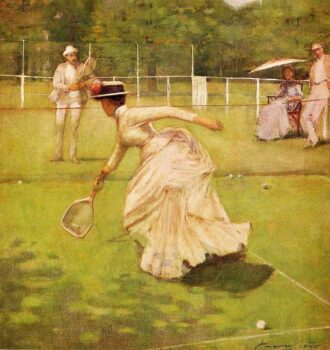
Judging from the women’s tennis costume of the time, one can well imagine Dillie preferring male dress for sport.

Find more women’s tennis fashions here: https://www.mimimatthews.com/2016/08/08/victorian-sporting-fashions-tennis-costumes-of-the-late-19th-century/
CHAPTER SIXTEEN - “An Uneasy Alliance”
Newnham and Girton
Holmes queries Dillie on why she would not consider Newnham or Girton. Both were colleges for women at Cambridge founded at roughly the same time, a bit before this story takes place. At the time, women were not allowed at the Universities, although they were allowed to audit classes, providing the professor permitted. In 1863, some girls sat for exams at Cambridge, but no female matriculated from Cambridge until….wait for it….degrees were finally awarded in 1948!!!!!!
Despite their common goal of providing higher education for women, Girton and Newnham were quite different from each other. Newnham started as a house for five students in 1871, and its administrators encouraged students to study “traditional female subjects” such as English, Literature, and History. They very much did not encourage them to compete with men. Girton, founded in 1869 by Emily Davies and Barbara Boudichon, was a residential college with leaders who intended to achieve the same status as the universities, and to bestow university degrees. They were immediately denounced in the Quarterly Review by Oxford history professor Montagu Burrows: “The one thing men do not like is the man-woman, and they will never believe the College or University woman is not that type.” Obviously he was mistaken, and you can trace the rise of women at Cambridge here: https://www.cam.ac.uk/TheRisingTide
A wonderful play, Blue Stockings, by Jessica Swale, takes place at Girton in 1896, a little after the time of this story. “Bluestockings”was a perjorative term for intellectual women, a group which men then and, unfortunately even now, often view as threatening. https://www.nickhernbooks.co.uk/plays-to-perform/bluestockings
CHAPTER SEVENTEEN - “Smell the Roses”
Roses
English gardens are famous for roses and the David Austin company has revived and cultivated many antique varieties, a few of which can be seen here. These might very well have been included in the garden of “Our Lady of the Roses”, tended to by Father Lamb.
Pachelbel’s Canon
This beloved composition was originally written in 1680 for three strings and continuo, and while most often played orchestrally, it can be sung. Although it was not well-known in Holmes's time, you've doubtless heard it at weddings, and the joke is that the bass line is hated by cellists everywhere as it simply repeats...and repeats...and repeats.
Here is a Youtube video of three sisters singing the Canon, eventually joined by more. You can hear how the contrapuntal lines easily lend themselves to voice:
https://www.youtube.com/watch?v=JScgGvNFaH4
This is another version, this time with an a capella choir, perhaps even more lovely:
https://www.youtube.com/watch?v=Zl2VQvVsOqg
CHAPTER EIGHTEEN - “Buttons Unbuttoned”
Flamboyant Silk Pyjamas
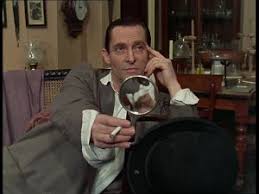 Men’s pyjamas were introduced in Britain in the seventeenth century. They originated in India, where they were worn by both sexes, but were initially called “mogul’s breeches”. They did not gain wide use until the 1870’s and even through Holmes’s time, men primarily wore nightshirts (the illustration shows Holmes wearing this rather than pyjamas). They were a fashionable, slightly “hip” choice at this time, and flamboyant ones in silk would have had a certain risqué quality to them—surprising stuff to find in the Deacon’s wardrobe.
Men’s pyjamas were introduced in Britain in the seventeenth century. They originated in India, where they were worn by both sexes, but were initially called “mogul’s breeches”. They did not gain wide use until the 1870’s and even through Holmes’s time, men primarily wore nightshirts (the illustration shows Holmes wearing this rather than pyjamas). They were a fashionable, slightly “hip” choice at this time, and flamboyant ones in silk would have had a certain risqué quality to them—surprising stuff to find in the Deacon’s wardrobe.
Here is typical sleepwear of the time!
And here is what a “flamboyant" pair of men’s silk pyjamas of the time might have looked like:
Ink bottle
Below is a lavender ink bottle of the period, imprinted with the letter “D”—possibly for the maker, “Diamine”, which has been making top quality inks since 1864. They are in existence today and the author signs her books with them. Also pictured is Diamines “Flower Set” of colours.
CHAPTER NINETEEN - “Those Men! Those Women!”
THE RAPE OF THE LOCK
Alexander Pope’s “The Rape of the Lock” was a comic poem, original intended to poke fun at the upper classes. You can find the full text here: http://www.gutenberg.org/files/9800/9800-h/9800-h.htm#section1
And here’s the part that was inscribed on the doll:
Say what strange motive, Goddess! could compel
A well-bred Lord t' assault a gentle Belle?
O say what stranger cause, yet unexplor'd,
Could make a gentle Belle reject a Lord?
In tasks so bold, can little men engage,
And in soft bosoms dwells such mighty Rage?
 In this poem, “rape” does not have the modern meaning, but the antiquated one—“to grab, to carry off”—and refers to an angry lover who cuts off a lock of his beloved’s hair and makes away with it. It’s a satirical work, making fun of all the sturm und drang of young love among the idle rich of London of the time (1714). Apparently two families of Pope's acquaintance had been friends until young Lord Petre (son of one family), in a fit of pique upon being rebuffed by Arabella Fermor (daughter of the other), cut off a single lock of her hair at a party. Incensed, Miss Fermor made a scene, and the incident untimately led to the two families' estrangement. Pope wrote this comic poem to poke fun at this "much ado" over a trivial matter. In our story, though, whoever left the quote on the doll in our story may…or may not…have meant something more serious.
In this poem, “rape” does not have the modern meaning, but the antiquated one—“to grab, to carry off”—and refers to an angry lover who cuts off a lock of his beloved’s hair and makes away with it. It’s a satirical work, making fun of all the sturm und drang of young love among the idle rich of London of the time (1714). Apparently two families of Pope's acquaintance had been friends until young Lord Petre (son of one family), in a fit of pique upon being rebuffed by Arabella Fermor (daughter of the other), cut off a single lock of her hair at a party. Incensed, Miss Fermor made a scene, and the incident untimately led to the two families' estrangement. Pope wrote this comic poem to poke fun at this "much ado" over a trivial matter. In our story, though, whoever left the quote on the doll in our story may…or may not…have meant something more serious.
Pope took such a long time to finish his poem that by the time it was published, poor Lord Petre was dead of smallpox and Miss Fermor had married another Here’s a picture of the lady who inspired the poem, Arabella Fermor, who does have rather nice hair.
TRINITY COLLEGE

Founded by Henry VIII in 1546, and boasting 32 Nobel Prize winners, Trinity is where the aristocratic Freddie Eden-Summers attended and is one of the most picturesque colleges at Cambridge (see photos), as well as one of the most revered. Famous alumni include Francis Bacon, Issac Newton, Charles Babbage, James Clerk Maxwell, Lord Rayleigh, Jawaharlal Nehru, Alfred Lord Tennyson, Lord Byron, A.A.Milne, and Bertrand Russell. Cambridge has always been a leading light in many fields, science in particular.
At the time of this tale, students were encouraged to live on site and two courts: the New Court and Whewell’s Court. Both were constructed during the nineteenth century to house students who, it was feared, would face too much “temptation” if they lived in the town. Town and Gown… a source of conflict for centuries.
WEDDING PLANNER
Were there wedding planners in Holmes’s day? Well, if Holmes says so, there must have been! Fortunately, research bears this out. Weddings before the nineteenth century were often small, private family affairs but during the 1800's, they took on a grander scale,particularly among the upper classes, approaching the splashy events of modern times. One can find many descriptions of complicated floral arrangements in contemporary accounts. In “A History and Analysis of Weddings and Wedding Planning,” Claire Finnell, of Johnson and Wales University, states:
This was an era that marked significant change for wedding celebrations and ceremonies. In this era, there was a greater focus on decorations than ever before. At the beginning of the era, flowers were always used to decorate the churches and homes where the wedding would be celebrated. As the years went on these floral decorations gradually became more elaborate. Typically there was a carpet of flowers down the aisle that the bride was to walk on leading up to the altar. This was “because it was believed that this ensured a happy path to life for the bride” (Victorian Wedding Ceremony, 2018). Servants and even horses would be adorned in flowers to beautify the celebration as well. Roses were commonly used as they represent true love. This was also the era in which brides began to throw their wedding bouquets. In “Victorian ages, the bride originally tossed her bouquet to a friend as she left the festivities to keep that friend safe (by warding off evil spirits, of course) and to offer her luck” (The Knot, 2015) https://scholarsarchive.jwu.edu/cgi/viewcontent.cgi?article=1037&context=student_scholarship
ST. CEDD’S
 A fictional college at Cambridge. There is no record of a St. Cedd’s at Cambridge; therefore, Watson must have covered up Leo Vitale's actual college. However… St. Cedd’s was a name used by Douglas Adams in both his Dr. Who episodes and his "Dirk Gently" series, so perhaps there is an older tradition, unknown to us at present, that caused Dr. Watson to hide Leo’s real college by using this name. Adams supposedly based St. Cedd on his own college at Cambridge, St. John’s, pictured here. St. John’s and Trinity are traditionally rivals, since Henry VIII (founder of Trinity) had the St. John founder (Saint John Fisher) executed. It is said that the older courts in Trinity have no “J” staircases for this reason.
A fictional college at Cambridge. There is no record of a St. Cedd’s at Cambridge; therefore, Watson must have covered up Leo Vitale's actual college. However… St. Cedd’s was a name used by Douglas Adams in both his Dr. Who episodes and his "Dirk Gently" series, so perhaps there is an older tradition, unknown to us at present, that caused Dr. Watson to hide Leo’s real college by using this name. Adams supposedly based St. Cedd on his own college at Cambridge, St. John’s, pictured here. St. John’s and Trinity are traditionally rivals, since Henry VIII (founder of Trinity) had the St. John founder (Saint John Fisher) executed. It is said that the older courts in Trinity have no “J” staircases for this reason.
Below is a bridge connecting St. John’s to Trinity.
CHAPTER TWENTY - “The Mind Reader”
LOCKSMITH BOOBBYER
There was indeed a locksmith by that name in Stanhope Street, as you can see from this 1882 advertisement:
GUNN’S HOME BOOK OF HEALTH
 The book that indicates (along with other things) Colangelo’s hypochondria to Holmes was a staple household possession for families in America, but perhaps less so for a single man in England, especially one bookmarked in a dozen places.
The book that indicates (along with other things) Colangelo’s hypochondria to Holmes was a staple household possession for families in America, but perhaps less so for a single man in England, especially one bookmarked in a dozen places.
It is described in an earlier edition, thusly: “Gunn's Domestic Medicine, or Poor Man's Friend, in the Hours of Affliction, Pain, and Sickness, This Book Points Out in Plain Language Free from Doctor's Terms, the Diseases of Men, Women, and Children, and the Latest and Most Approved Means Used in Their Cure, and Is Expressly Written for the Benefit of Families, in the Western and Southern States; It also Contains Descriptions of Medical Roots and Herbs of the Western and Southern Country, and How They Are to Be Used in the Cure of Diseases; Arranged on a New and Simple Plan, by which the Practice of Medicine Is Reduced to Principles of Common Sense”.
CHAPTER TWENTY-ONE - “The Tables Turned”
THE COIN BEHIND YOUR EAR TRICK
While this trick is not particularly difficult, Colangelo was trying to get his sleight of hand working on the non dominant hand after his accident. It’s now a staple for beginning amateur magicians and is considered your “cool uncle"’s trick. Here’s how it’s done. Of course, Colangelo added a sharp smack to the side of the head for his own reasons….
CHAPTER TWENTY-TWO - “The Doldrums”
LAUDANUM and the BABY SOOTHER

At this time, it was common practice to induce sleep in infants with "soothers"—many of which contained laudanum, a strong and addictive depressant. These soothers were available everywhere without a prescription, and heavily marketed.


Infants of working women were often given soothers to allow their mothers time to work in the fields or factories. The general public did not recognise the danger, and medicines were not regulated as they are now.
One famous soother, Godfrey's Cordial, was employed by adults. This cordial contained ginger, rectified spirits of wine, oil of sassafras, tincture of opium and Venice treacle—the last being a combination of drugs used in the Middle Ages for the plague which contained opium.

Another was Darby's Carminitive, which at this point had been around quite a while.
https://wellcomecollection.org/articles/WckzzigAACe3DJPD
Watson, as a doctor, well knew the dangers of opium-laced medicines particularly on such a sensitive nervous system as that possessed by his friend. That Holmes was attempting to calm his hyperactive state with repeated doses of baby soother was highly dangerous. Particularly if he was combining it with cocaine.
But why would Holmes, who is clearly depressed by a lull in work, wish to further lower his mood with a baby soother? And why might he have combined it with a stimulant such as cocaine? Many modern experts would describe Holmes's general condition as manic depression or bipolar disorder, which in its subtler manifestations at the time was thought to be more of a personality type, "the artistic temperament". This may well be partly true, and some have argued that the condition itself is on a continuum and only in its extremes becomes an illness (Kay Redfield Jamison, Touched With Fire).
In any case, we can see here that Holmes is suffering both a depression because his cases have stalled out, and a kind of hyperarousal, like a revving engine which has become uncoupled with the machine it is supposed to be driving. As Watson noted elsewhere, Holmes has told him that, "My mind is like a racing engine, tearing itself to pieces because it is not connected up with the work for which it was built."—("The Adventure of Wisteria Lodge").
Holmes has, at this time, no work to occupy him. In modern psychiatric practice, this combination of mania and depression is called a "mixed state," and is exquisitely painful to the sufferer. To this day, these "mixed states" are difficult to treat. And while people with more normal wiring might stimulate themselves with a cup of coffee and relax with a glass of wine, Holmes, as in many things, is extreme. Watson has reason to be worried. The combination of drugs his friend is using could be lethal.
CHAPTER TWENTY-THREE - “The Story Collector”
THE LOCK SHOP
This map shows the approximate location of 221B Baker Street (arrow) in relation to Durham Road (green pin), wherein the specialty lock shop of Knut Lossup was situated.
Lossop's shop is described as being in a Tudor-style building which might have looked something like this. Few of these timber-framed structures survived the Great Fire of London (1666), but even today, some remain throughout the city. Pictured here is "Prince Henry's Room", located at 17 Fleet Street. https://commons.wikimedia.org/wiki/File:17_Fleet_Street_London.jpg
PADLOCKS
And here is a selection of Victorian locks, such as those which might have protected Lossop's "treasures".
CHAPTER TWENTY-FOUR - “Two For One”
ITALIAN RESTAURANT
That good Italian restaurants existed at this time in London is undisputed. One in Soho is described in The Dictionary of Victorian London as: "Here osso-buco, and minestrone and spaghetti were to be found as undiluted as at Savini's in Milan, and washed down with such productions of the vine as Chianti, Lacrima Christi, and Capri."
The precise restaurant located on Dorset Street (presumably the Dorset Street nearest Baker Street) is unknown, but a wonderful small Italian restaurant can be found there today, namely Anacapri, one of the author's favourites, pictured below with tables set out al fresco in the warm weather.
VICTORIAN ENGAGEMENT RINGS
Often these were of older vintage, passed down through generations. The diamonds were cut differently then; here is an example of a "mine cut", which gives a distinctly different appearance than the modern standard, the round "brilliant".
Below is a ring which wraps around the finger, culminating in two stones—a "toi et moi" ring from 1885, close to the time of this tale.
https://4cs.gia.edu/en-us/blog/victorian-style-engagement-rings/
And if that style didn't suit, here is a selection of vintage rings, mostly Victorian:
CHAPTER TWENTY-SIX - “The How and the Why”
SHOE BUCKLE
These were mostly worn on women's shoes, but would perhaps appear decoratively on a man's stage costume. Our buckle could well have looked like this Parisian one, from the era. We do know that Borelli is a stylish man; this would be a distinctive look.

FLASH POWDER, OR "BLITZLICHT"
The history of flash photography is rife with contradictions and competing inventors, but let's make it simple.
The first efforts to use artificial light for photography employed phenomenally dangerous oxy-hydrogen light. This was a lump of calcium carbonate, ignited by an oxygen flame. The technique was also used in stage lighting, where it was called "limelight." If you remember, limelight is featured in the "Chat Noir" chapter of Art in the Blood. It was very bright, was difficult to regulate, and tended to overexpose the faces nearest the camera. By the time of our adventure, still photographers used various combinations of magnesium and other elements to create "flash powders", which were ignited using a continuously developing series of mechanisms, some of which were connected to triggers. Even these were dangerous, and could ignite accidentally, possibly killing the photographer. A man named Traill Taylor is credited with first using magnesium flash powder as the sole light source for still photographs. E.A. Kenyon followed this in 1883 with another, similar formula, but the amount of smoke it created made it a challenge in indoor settings.
As Holmes, ever the chemist, notes,the blitzlicht used in this story was made of powdered magnesium and potassium chlorate.

